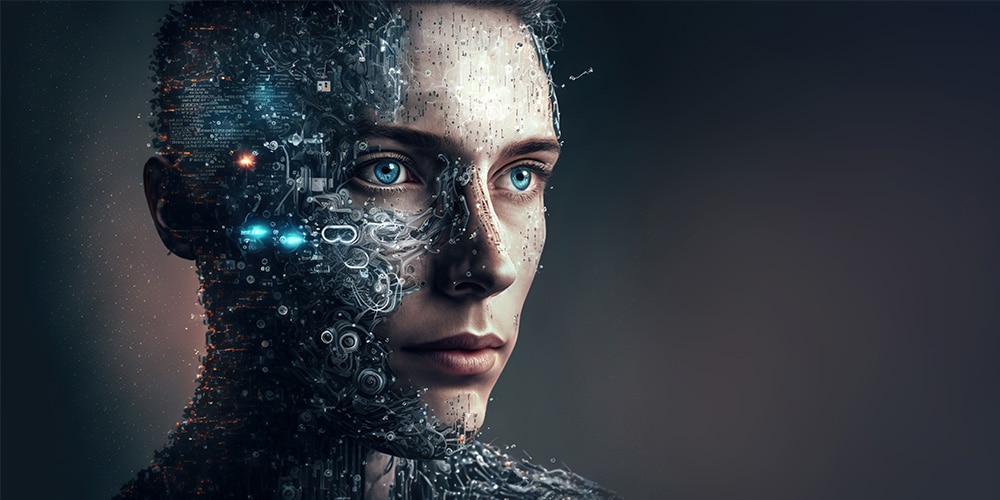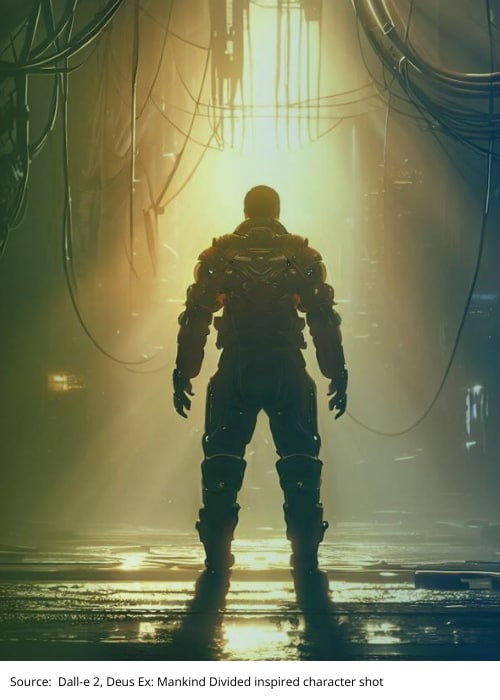
Exploring the future of media with AI‑human art
The world of media and storytelling is no stranger to transformation. From the age of oral narratives to the digital revolution, the media landscape has continuously evolved, molding and adapting to the spirit of the times. Today, we stand on the threshold of a pivotal juncture, marked by the commoditization of digital content driven by Generative AI. This new frontier brings with it challenges and opportunities that could redefine the media and storytelling space as we know it.
AI-human partnership will supercharge creative output
The rapid evolution of AI image generation capabilities over the past 18 months has been remarkable. Within the span of 18 months, Generative AI image tools have evolved from generating outputs resembling interpretive art pieces to hyper-realistic images that blur the boundaries between artificiality and reality.
Such progress demonstrates AI's potential as a versatile creative partner for artists and designers. The industry also reflects this sentiment. Sejal Amin, Chief Technology Officer at Shutterstock, shared her insights, There are many different ways content creators and artists are looking at what the emergence of Generative AI technologies will mean for their workflows and craft. At Shutterstock, we're excited to embrace AI as another creative tool that will allow marketing professionals to supercharge the creative process while simultaneously ensuring that artists are compensated for the role their content IP plays in the process.
Amin's perspective elucidates the growing value of AI in creative domains. When incorporated thoughtfully into workflows, AI systems promise to augment human imagination and expand artistic frontiers. The technology serves not as a standalone creative force, but as a collaborator that can help actualize human vision. It provides a means to quickly visualize and iterate on concepts, directions that may inspire new creative perspectives – expanding the creative palette.

Rather than the threat of replacement, these systems point toward AI empowering creativity. With human and AI in partnership, new artistic possibilities emerge.
Media production will become ‘AI-first’
AI's potential extends far beyond individual elements of creativity and media production. It's gradually laying the foundation for a new media value chain model where all aspects of the creative process commence with Generative AI and conclude with human refinement, a principle we refer to as "AI-first."
Consider The Frost, a movie kick-started by Generative AI and honed by human expertise, developed by Waymark Creative Labs. The initial production involved AI-generated scripts, voiceovers, sound effects, and imagery, which were later shaped and fine-tuned by human creative professionals. This blend of AI and human creativity–a pioneering approach in the world of cinema–provides a compelling glimpse of a future where Generative AI initiates and revolutionizes the media creation process, while humans bring the finishing touches that add depth and appeal to the content.
The journey towards an AI-first approach is certainly underway, as highlighted by the perspectives of industry influencers. Arianna Bocco, former President of IFC Films, reflected on the advent of AI in media production. Like any new tool it can be scary as we don't understand the full impact of what it can do or the implications of how it will change the industry. But the bottom line is that it will change the industry and there can be a lot of positive impact within that change,
she expressed.
Bocco's thoughts are indicative of a trajectory that's gaining momentum, even though a full consensus has yet to emerge. Her words underline the growing recognition that the integration of AI technology and human creativity can catalyze a significant paradigm shift in media production.

With an 'AI-first' approach, the industry stands to gain from AI's capacity for initial ideation and creation, complemented by the essential refinement and perfection delivered by human hands.
The risk of content commoditization is real
The advent of Generative AI in the media landscape, while teeming with opportunities, also poses considerable challenges. In the world of AI-enabled content production, creative outputs can be generated at unprecedented speeds. This capacity risks saturating the market with content that's widely available and indistinguishable as AI-generated. The potential oversupply of Generative AI-produced content could significantly diminish the perceived value of unique, human-crafted content.
The increased risk of commoditization will impact a wide array of industries—particularly those engaged in content creation, publishing, advertising, and entertainment. For instance, in the film and television industry, where exclusivity and originality of content often dictate market success, the onslaught of Generative AI-created content could disrupt traditional value propositions.

The challenge lies in ensuring that content continues to offer unique value in the face of Generative AI's democratization of content creation. Maintaining the distinctiveness and value is crucial for human creators and media businesses as they navigate this evolving landscape.
Differentiation will be achieved through data-driven, adaptive content
Amidst this landscape, a new value proposition is emerging for the media industry as the source of value and differentiation shifts from content to interaction. Companies that can effectively harness the wealth of data generated through media consumption–through an interactive content/data feedback loop–will carve out a competitive edge. This future emphasizes the importance of understanding and responding to audience behaviors and preferences in real-time, effectively targeting and interacting with a segment of one.
The implications are profound; by leveraging Generative AI and data, media platforms can transition from one-way content delivery mechanisms to interactive, two-way systems.

Instead of merely feeding audiences pre-set content, the media of the future will dynamically adapt to individual preferences, create personalized experiences, and interact with audiences in real-time. They help choose the storyline.
Shifting from static to such adaptive content fundamentally alters the business landscape. As AI drives down content generation costs, consumer expectations will simultaneously evolve and the real value will lie in mastering an interactive content-data loop. To overcome the risks of content commoditization with a proactive strategy, businesses should consider adopting sophisticated, automated systems that allow real-time personalization of dynamic, interactive content based on usage and customer data. This transition is monumental. Multi-billion-dollar industries may need a total overhaul of traditional strategies and processes. Hence, the future of media lies in adaptability, innovation, and effectively harnessing AI, and particularly the latest derivative: Generative AI.
Picture a world where advertisements evolve from static images or videos into interactive dialogues tailored to individual consumer preferences or questions. Envision a movie that evolves in real time, adjusting its narrative based on audience sentiment or selections. Imagine a mixed reality experience that blends digital and physical worlds in a highly personalized narrative—a live 3D sporting event with stats unfolding on a dining room table.
